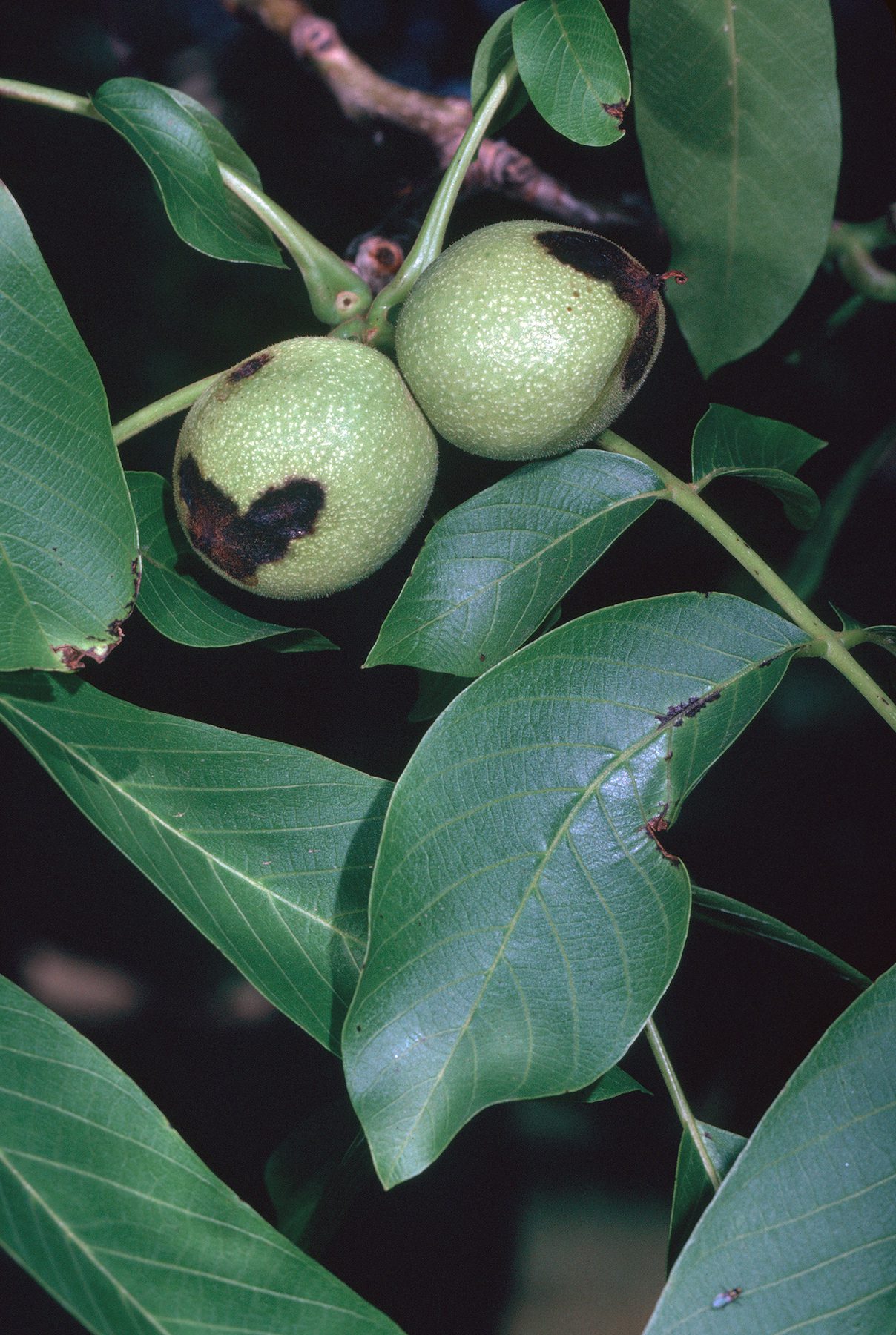
Disease history and weather should dictate the timing of walnut blight sprays in spring, according to information out of UC Cooperative Extension. When rain is forecast, growers can spray walnuts at bud break or catkin emergence and follow up with a second spray 7 to 10 days later depending on orchard history.
Walnut blight pathogens overwinter on healthy buds and are splashed by rain onto developing flowers and leaves in the spring. According to an article in the Sacramento Valley Orchards newsletter, twig cankers provide another overwintering mechanism that can supply inoculum for primary infection. Under wet conditions, cankers release bacterial cells that can spread and infect green tissues.
Walnut blight infections remain a concern through May. The Xanthocast model developed by UCCE Plant Pathologist James Adaskaveg can help growers forecast disease risk and time sprays if one is warranted based on leaf wetness and temperatures. That link can be found here.
Monitoring for orchard history is based on surveys conducted in June. A survey the previous June of 10 trees for infected nuts indicating infections below 50 nuts equals a low risk, while infections above 150 nuts are characterized as high-risk. High disease levels generally result in high bud populations and presence of twig cankers.
Bud sampling during dormancy can also reveal risk based on weather conditions and also identify blight bacteria species present. These sources of information are best combined with the Xanthocast model to forecast disease risk and time treatments and retreatment intervals.
Once risk has been determined, treatments available include kasugamycin, a unique bactericide registered in 2018. This product provides a unique mode of action to copper, to which walnut blight has documented resistance. Kasugamycin applications should be made when conditions favor disease development. Timing and re-application should be based on disease history. Kasugamycin works best in combination with mancozeb or copper for long residual with reapplication in 7 to 10 days.
For treatment guidelines, see the article by Adaskaveg et al. in this Sacramento Valley Orchards edition.

Marni Katz
Marni Katz has lived and raised her family in the San Joaquin Valley for nearly 30 years. In that time, she has covered agriculture for a number of leading ag publications and organizations and gained a reputation for understanding and digesting complex information and presenting it to growers. She enjoys learning about new ways growers can farm more profitably and efficiently, and working with researchers and stakeholders to bring that information to the growing community. In her free time, Marni plays saxophone with jazz groups throughout the Valley and is an avid tennis nut.










